Hi there, in this article, I’ll be sharing with you the 26 types of yellow birds that you can find in Pennsylvania (PA).
Whether you’re a bird enthusiast or just curious about the different types of birds that inhabit the region, this article will provide you with a comprehensive list of these stunning creatures.
So, let’s dive in and discover the diverse and beautiful yellow birds that call PA their home!
| Name | Name |
|---|---|
 | American Goldfinch |
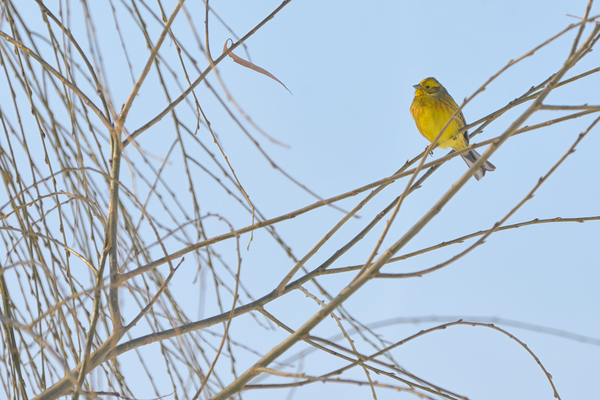 | Yellow Warbler |
 | Wilson’s Warbler |
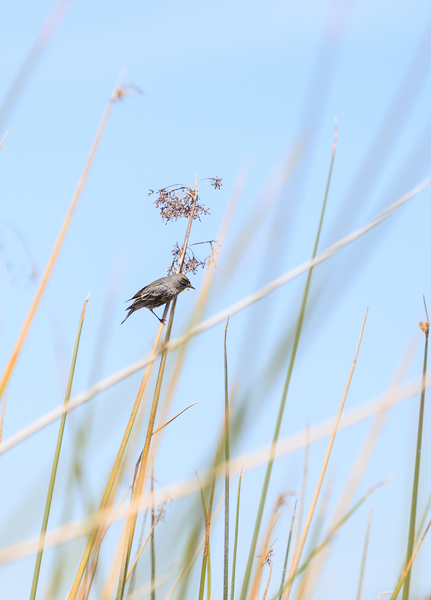 | Yellow-rumped Warbler |
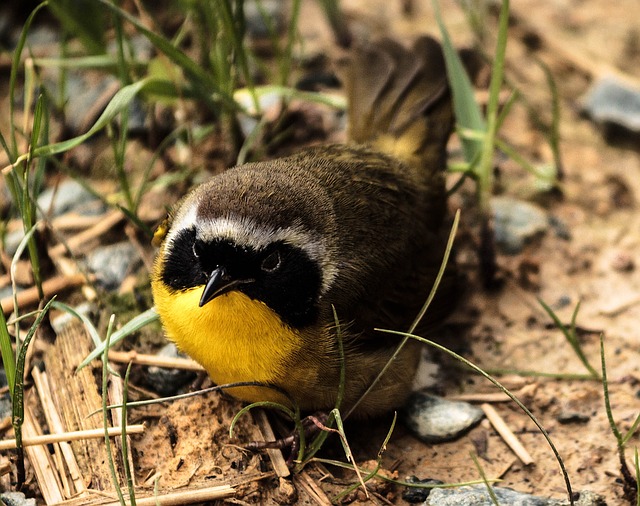 | Common Yellowthroat |
 | Yellow-breasted Chat |
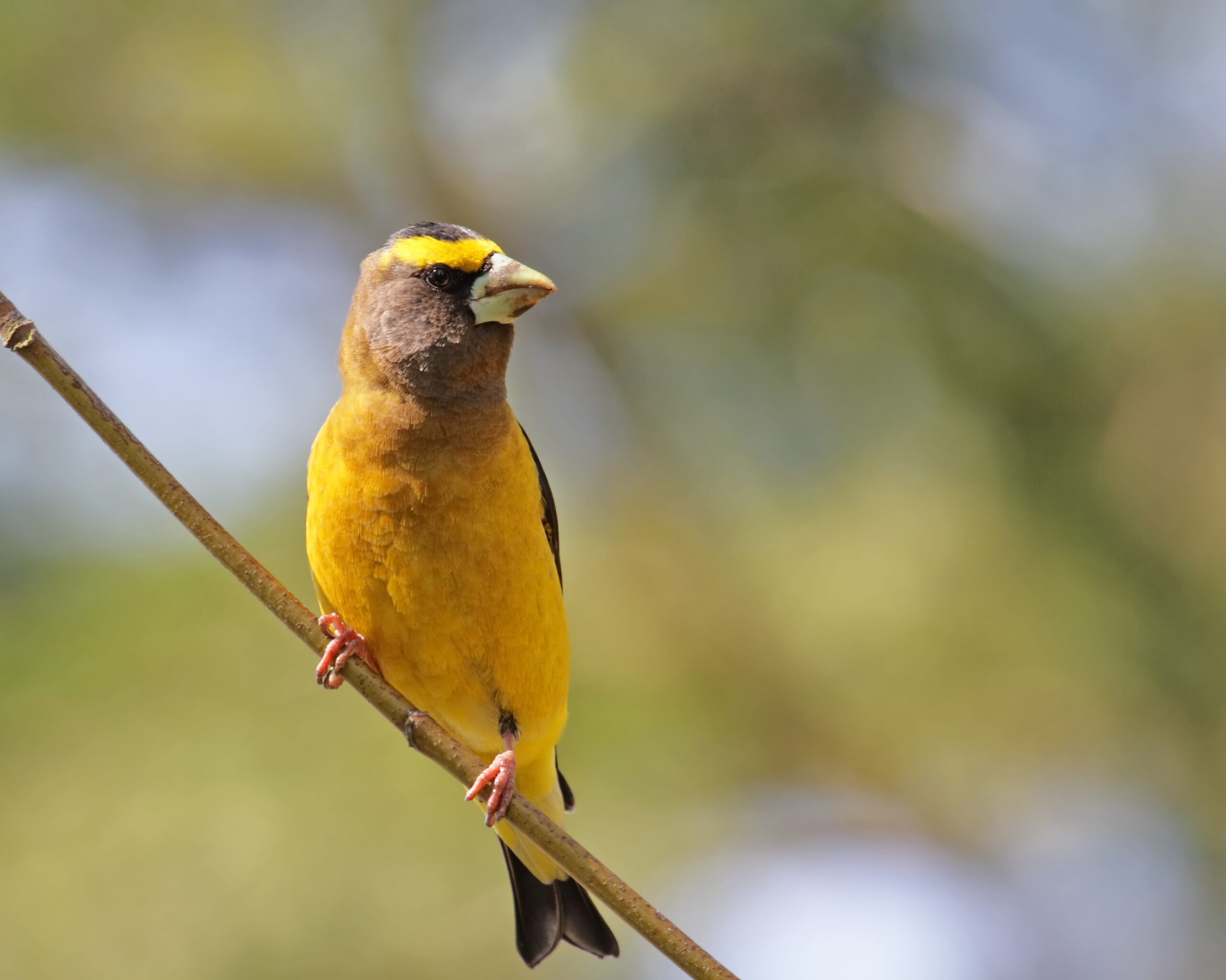 | Evening Grosbeak |
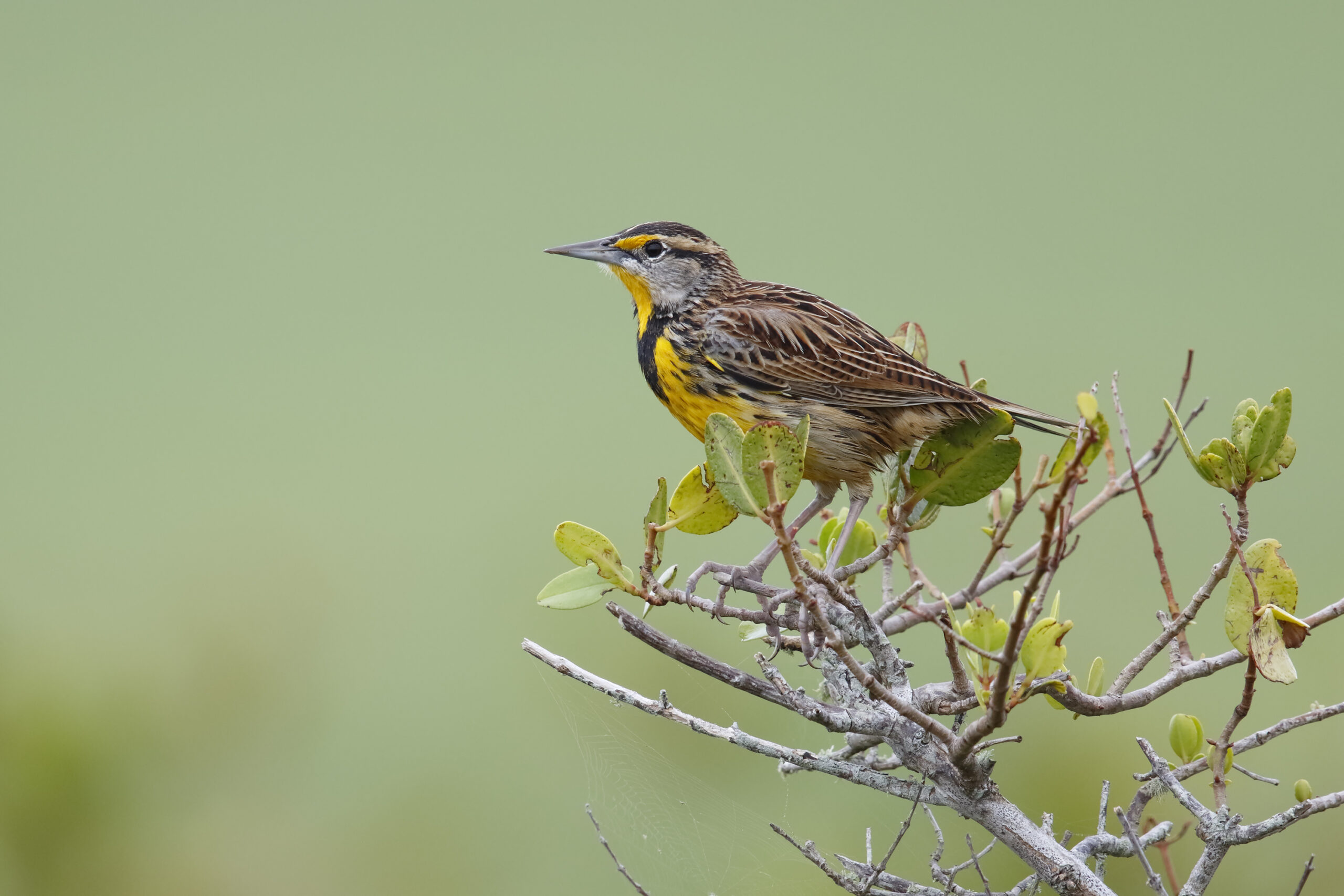 | Eastern Meadowlark |
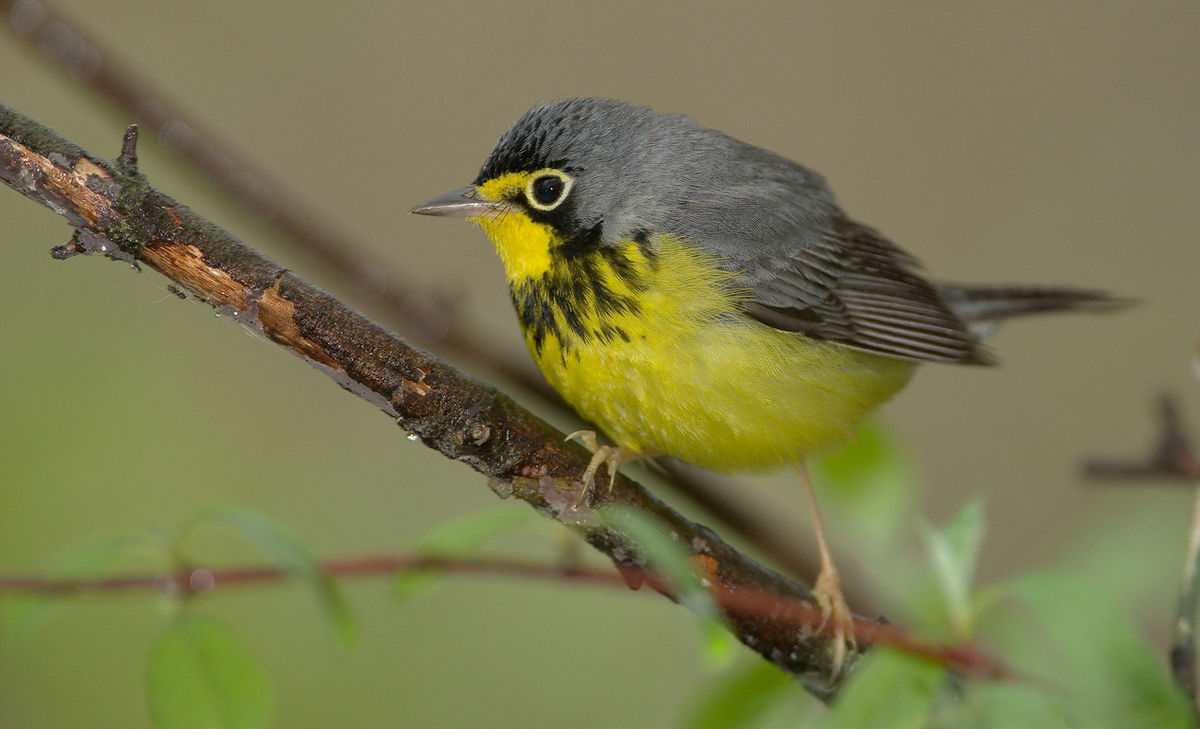 | Canada Warbler |
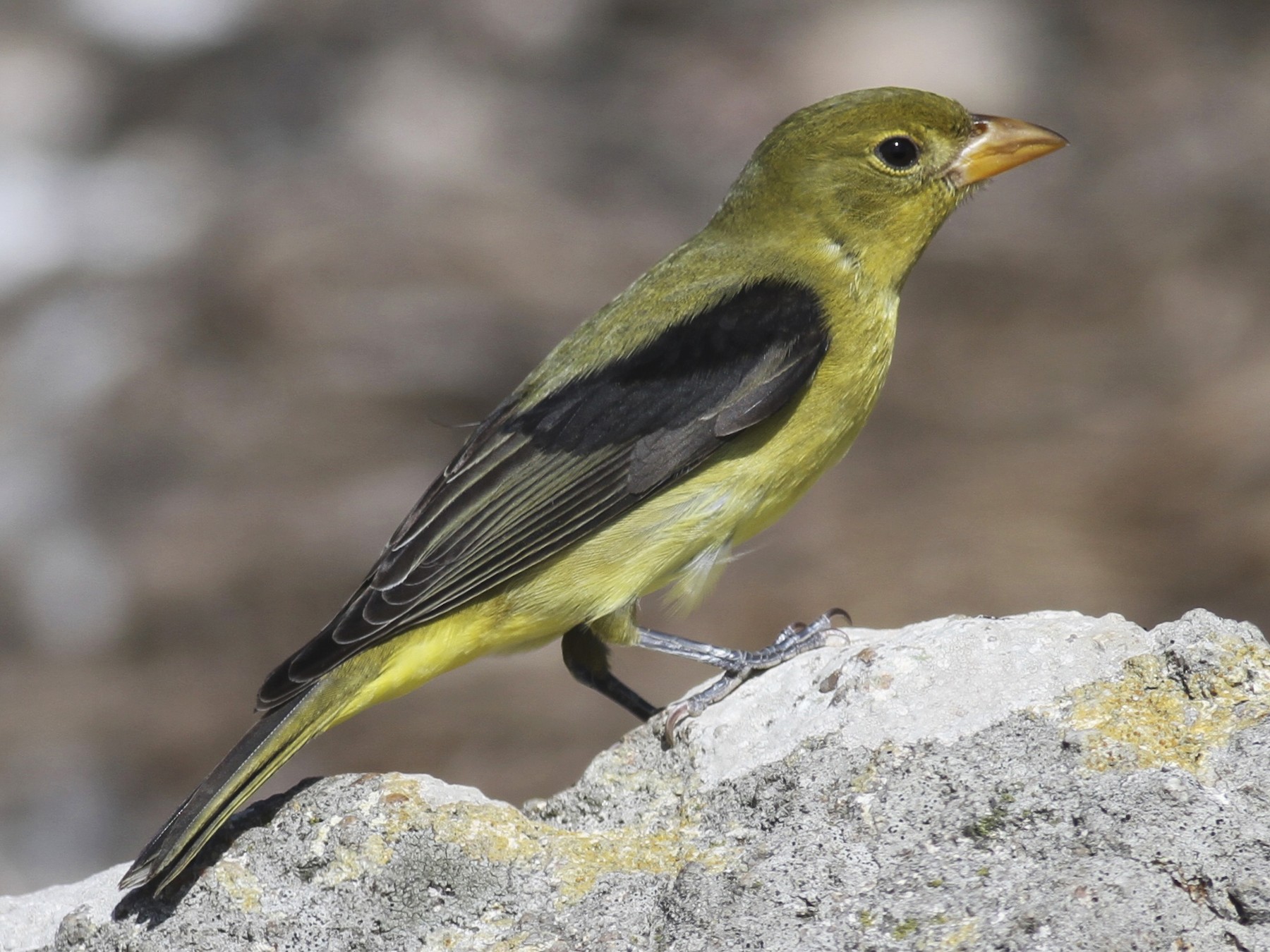 | Scarlet Tanager |
 | Summer Tanager |
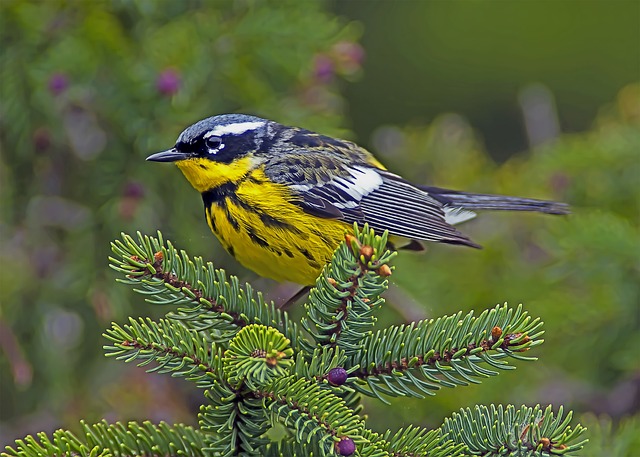 | Magnolia Warbler |
 | Nashville Warbler |
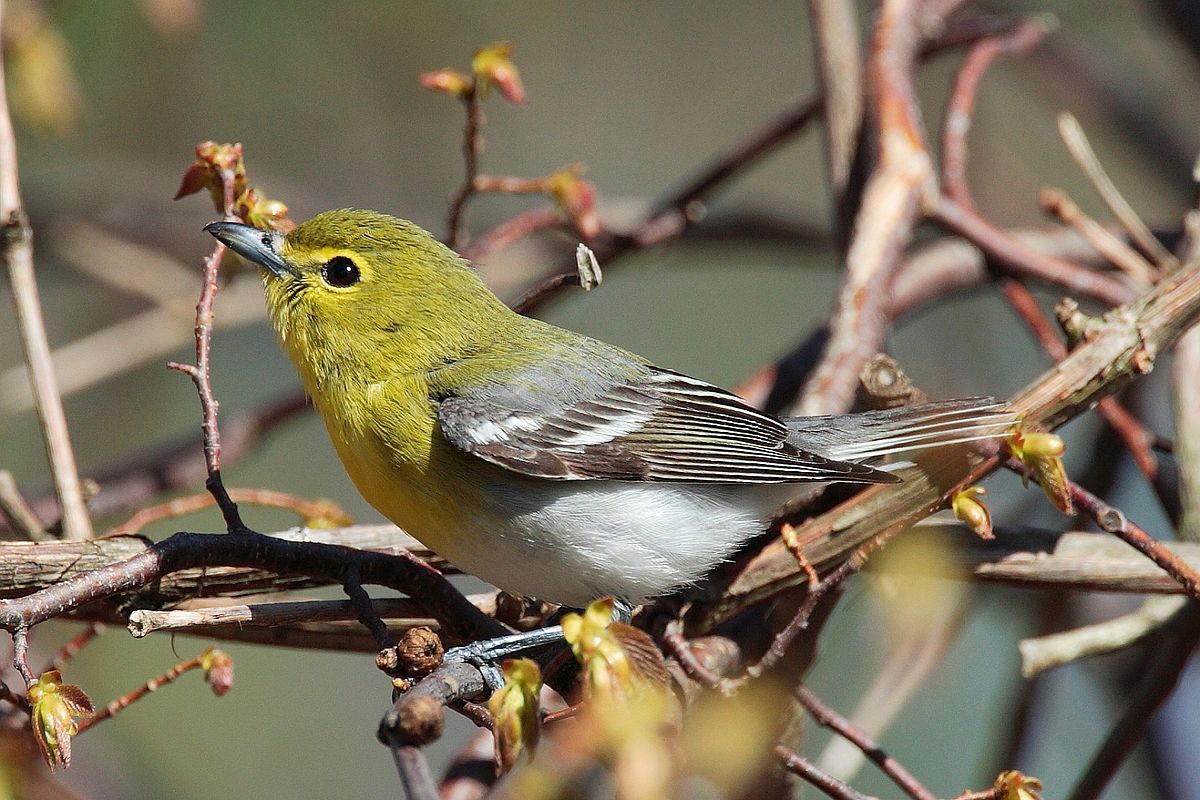 | Yellow-throated Vireo |
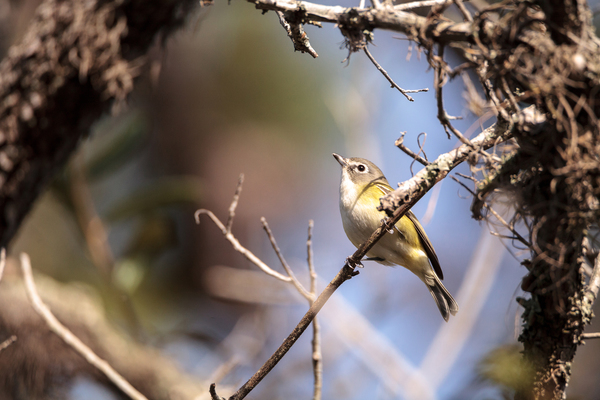 | White-eyed Vireo |
 | Prothonotary Warbler |
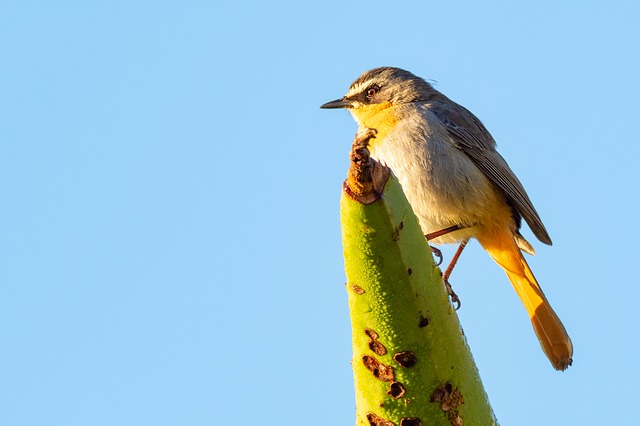 | Blue-winged Warbler |
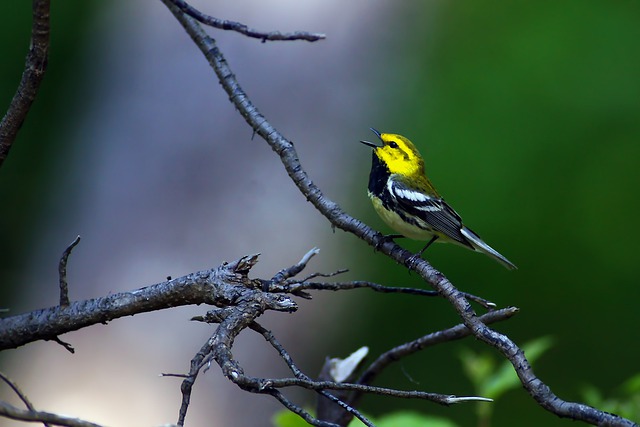 | Black-throated Green Warbler |
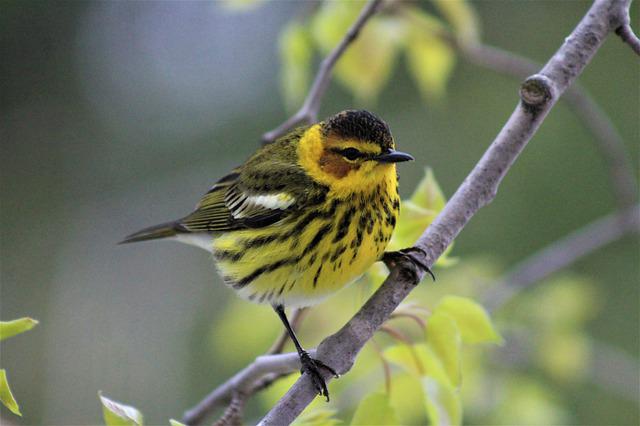 | Cape May Warbler |
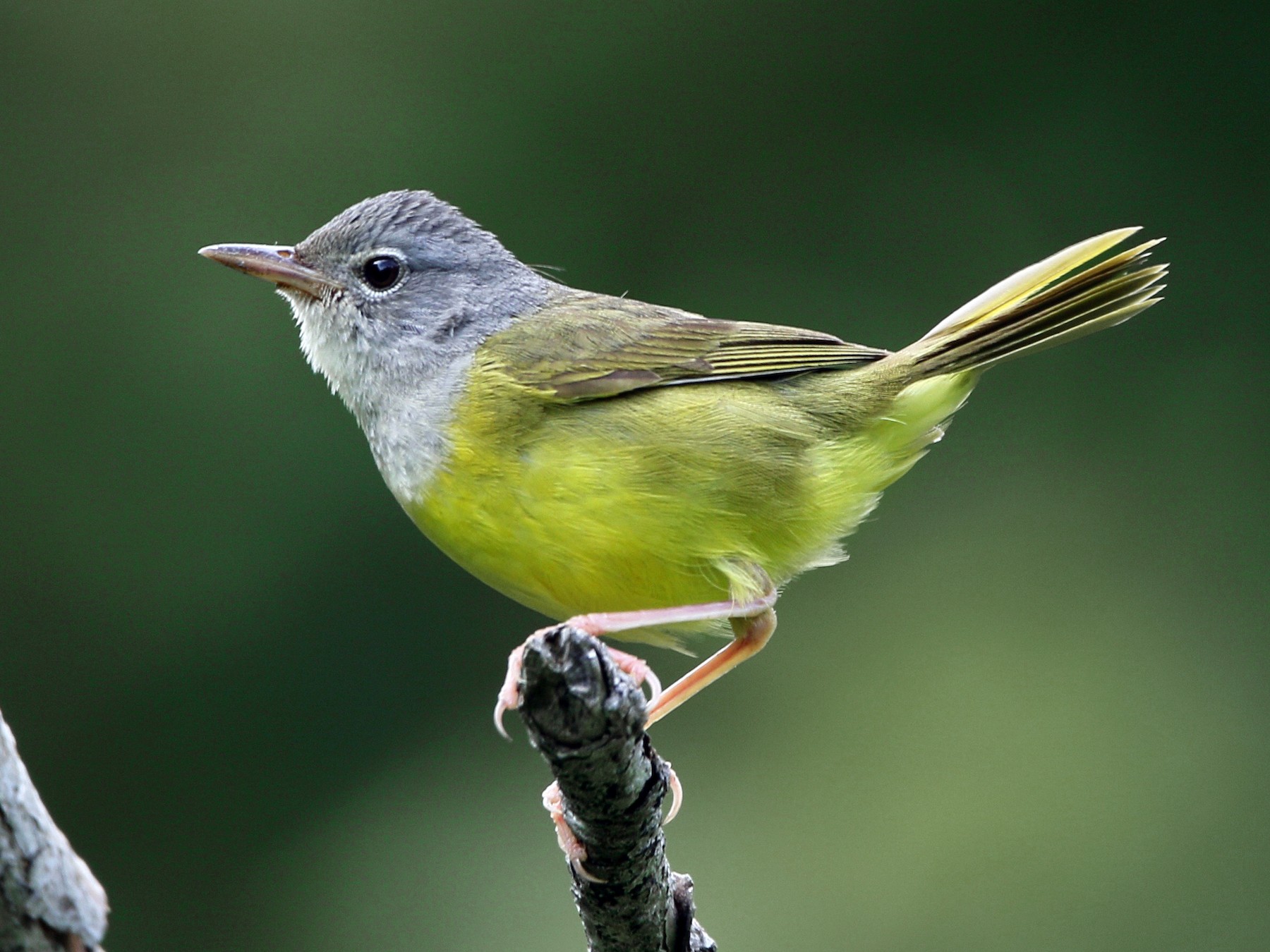 | Mourning Warbler |
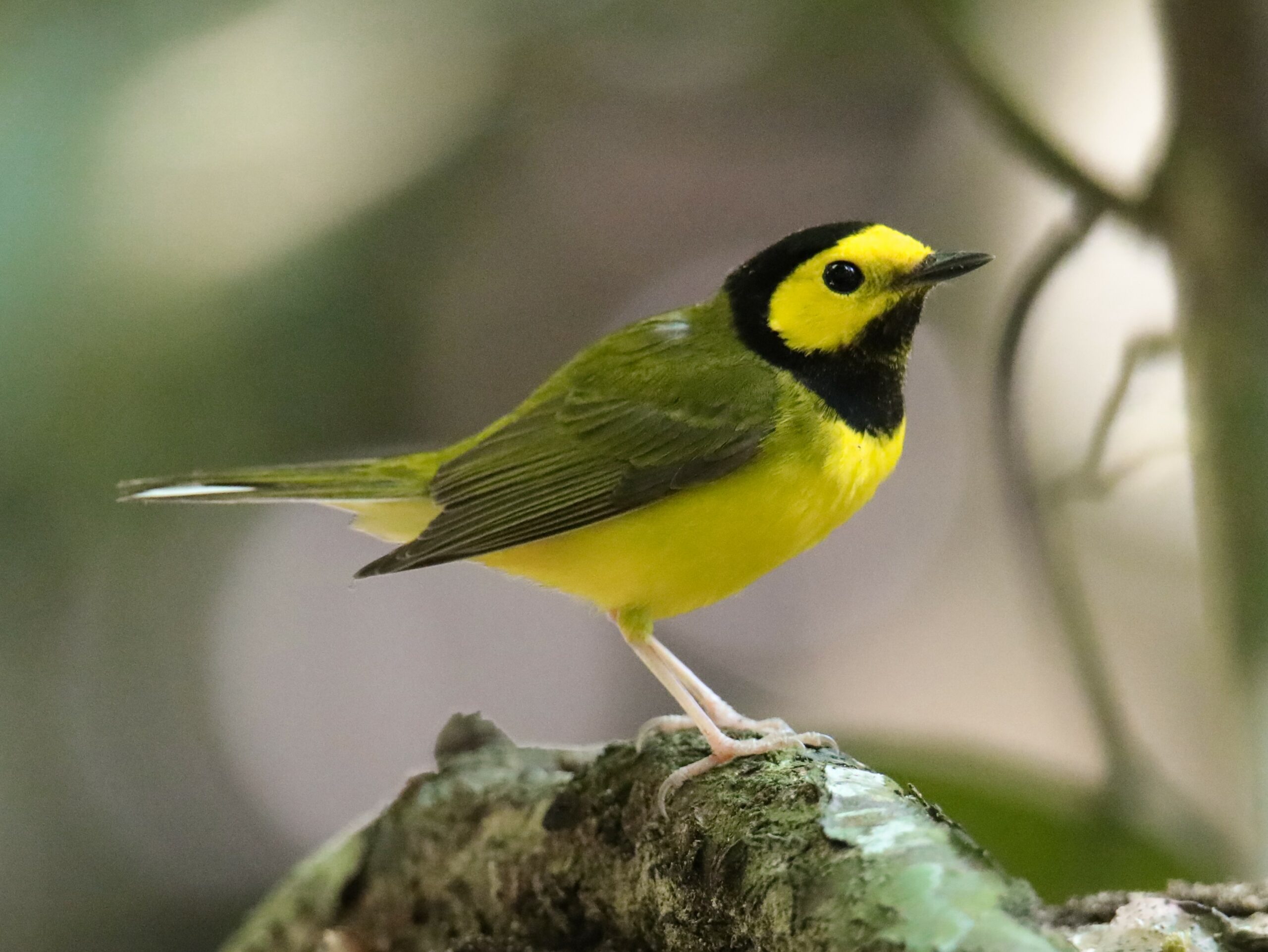 | Hooded Warbler |
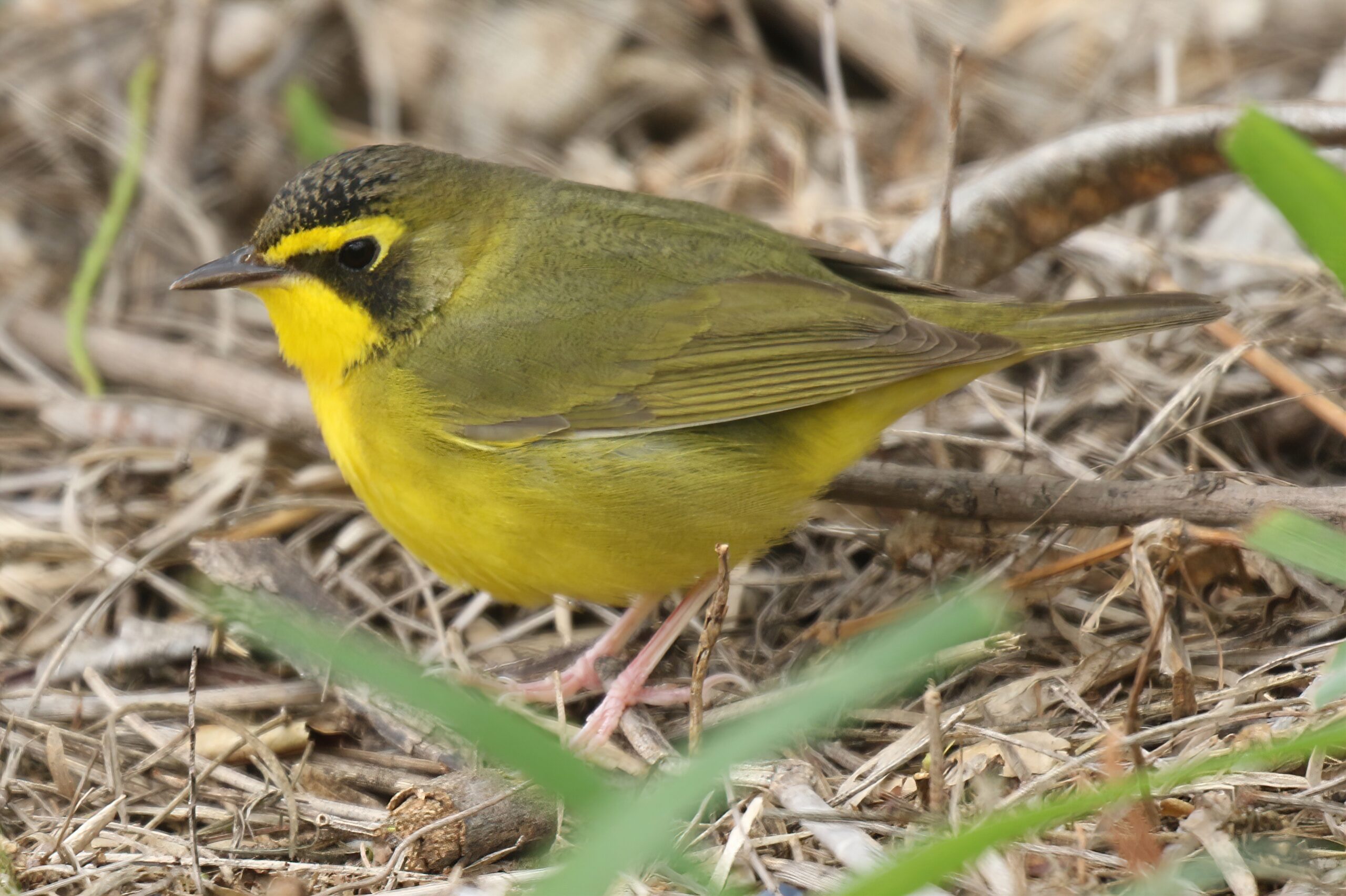 | Kentucky Warbler |
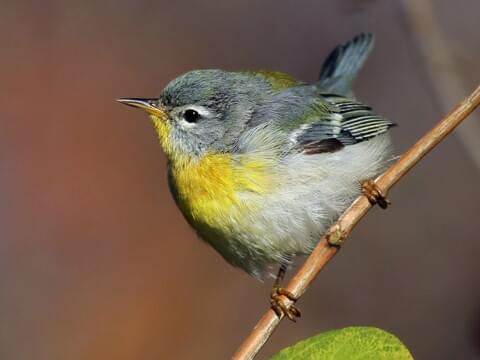 | Northern Parula |
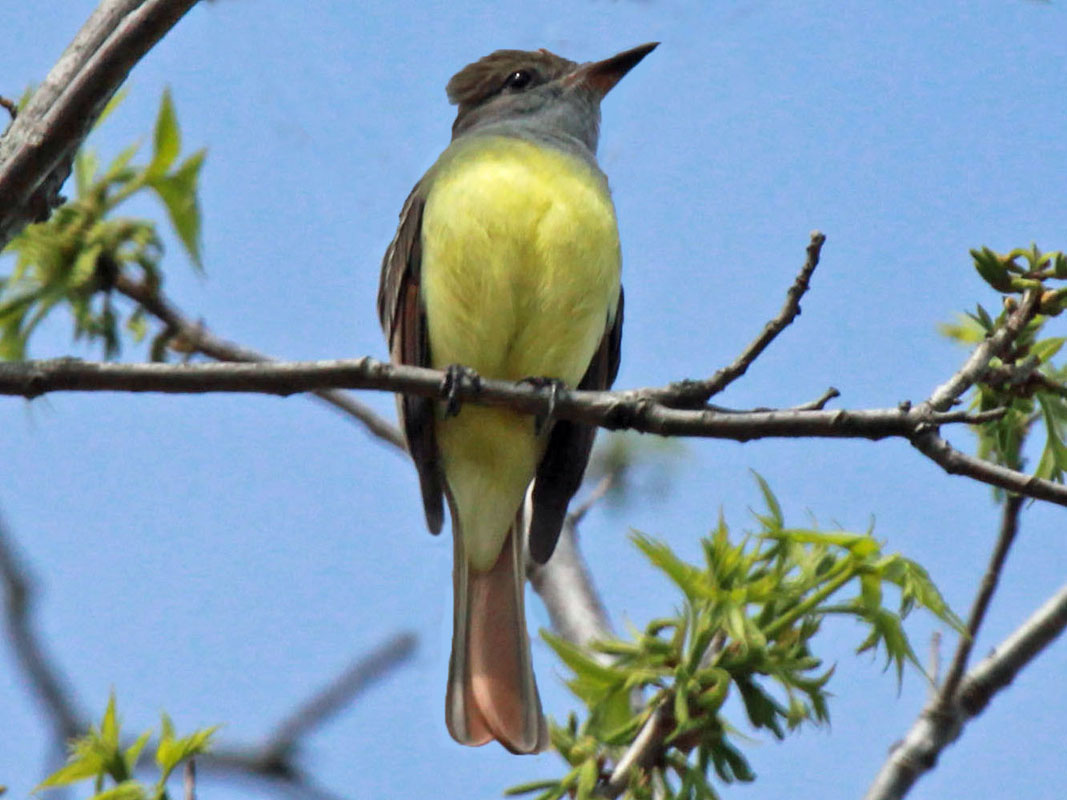 | Great Crested Flycatcher |
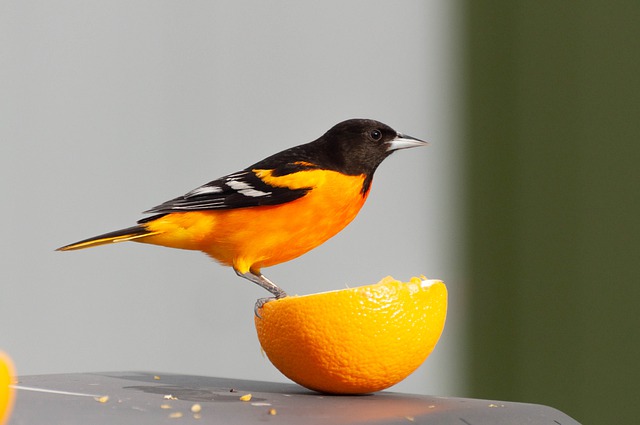 | Baltimore Oriole |
 | Orchard Oriole |
Types of Yellow Birds in Pennsylvania (PA)
1. American Goldfinch
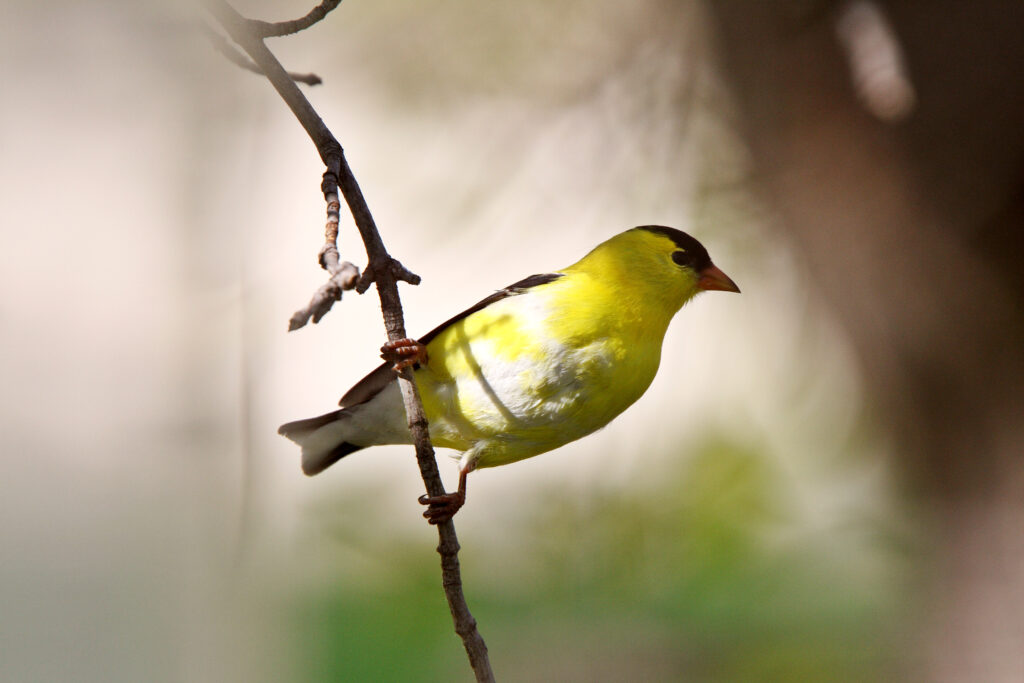
The American Goldfinch is a year-round resident in Pennsylvania, however, it’s particularly active in the warmer months of the year.
Male American Goldfinches are a brilliantly sunny yellow and have distinctive black caps.
Their black wings have intricate white patterns.
Females seem quite different from males, with an olive body and a duller yellow underside.
The American Goldfinch is a common resident of weedy meadows and river valleys, but it also frequents other habitats such as gardens, orchards, and roadsides.
Seeds and grains are a staple in their diet, and they may easily be lured to bird feeders by offering sunflower seeds.
2. Yellow Warbler

This bird, the Yellow Warbler, sometimes known as the American Yellow Warbler, certainly lives up to its given name.
The wings of adult males are a little deeper shade of yellow, and they possess two light wing bars.
They’re mostly black, with some white and red accents on the chest and head.
Female adults resemble males extremely closely but are more evenly yellow because of the absence of streaking.
This yellow bird breeds across Pennsylvania from April to August and then migrates to South and Central America for the winter.
It is most easily seen in open habitats, including grassland and low thickets.
3. Wilson’s Warbler
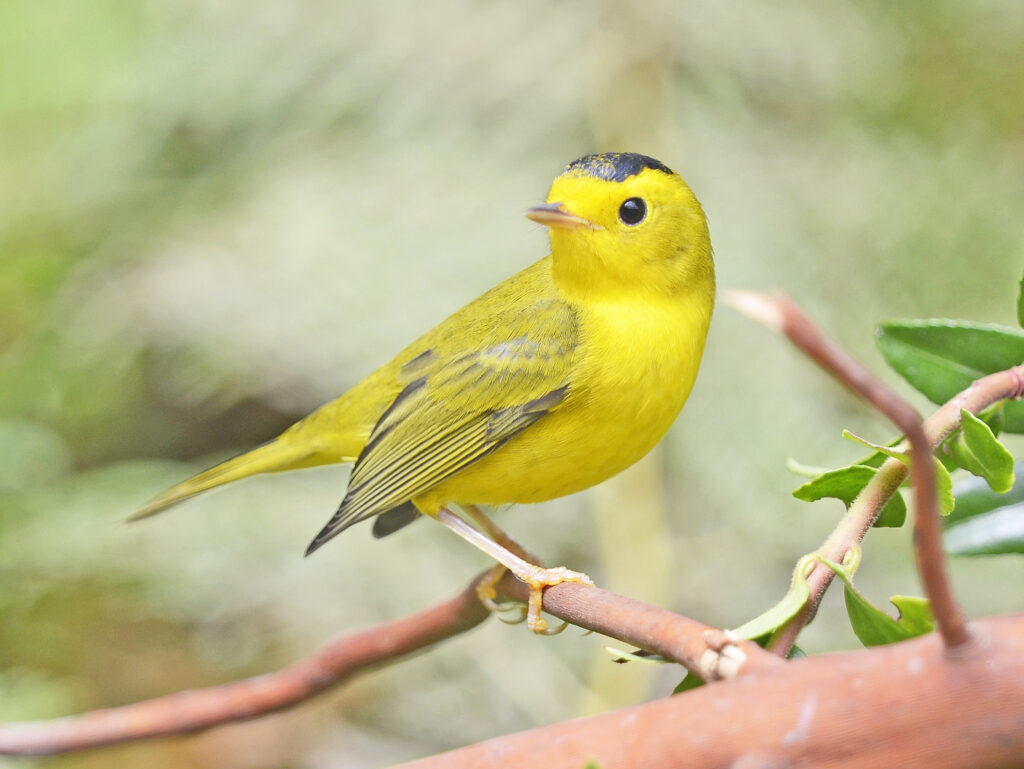
The little olive-and-yellowish-green Wilson’s Warbler is easily identifiable by its name.
Male adults additionally sport a black cape on their heads.
During the spring and autumn migratory seasons, this bird may be seen passing through Pennsylvania on its way from Canada toward its wintering sites across Central America.
Foraging for insects and other invertebrates, it thrives in humid, densely shrubbed forests.
4. Yellow-rumped Warbler

The Yellow-rumped Warbler is a species of bird with distinct male and female characteristics.
Throughout Pennsylvania, you may find a subspecies of this warbler known as a “Myrtle Warbler,” although it comes in a few other colors as well.
These little birds, native to Pennsylvania, possess a yellow rear and flanks to complement their blueish-gray, streaked upper parts.
You can spot this warbler across Pennsylvania any time between May and August since it is a summertime visitor there.
5. Common Yellowthroat

The Common Yellowthroat is an unusual warbler with a lot of vivid colors.
Male adults have a large black mask that wraps their forehead and face and a brilliant yellow breast and neck.
They have a black face mask with a grayish-white stripe across the top that blends into an olive-brown nape and back.
The only difference is that females don’t wear black facial masks.
Between April and August, it is a popular breeding bird across Pennsylvania.
These avian species travel south to warmer climates throughout the United States and Central America during the winter months.
For food, it mostly consumes insects and other invertebrates, and it is most at home in grassy or shrubby areas.
6. Yellow-breasted Chat

The size of these birds falls in between a sparrow and a robin.
They have an olive-greenish body, a brilliant yellow chest, a grayish face, and a white browband.
From May through August, you may see yellow-breasted chats across Pennsylvania.
Common habitats include dense, bushy regions and waterways.
This bird eats bugs of various sizes, including moths, beetles, ants, and grasshoppers.
Berries, such as elderberries and wild grapes, are another staple of their diet.
7. Evening Grosbeak

Easily distinguished from other finches by its enormous bill, the Evening Grosbeak is a huge and distinctive species of bird.
Male adults have golden breasts and a yellow head and mantle.
Women and juveniles are often a drab gray color.
Northern Pennsylvania is home to the Evening Grosbeak’s nesting grounds; the remainder of the state only sees this bird in the wintertime.
During the colder months, these yellow birds cluster together and are frequent visitors to bird feeders around Pennsylvania.
8. Eastern Meadowlark
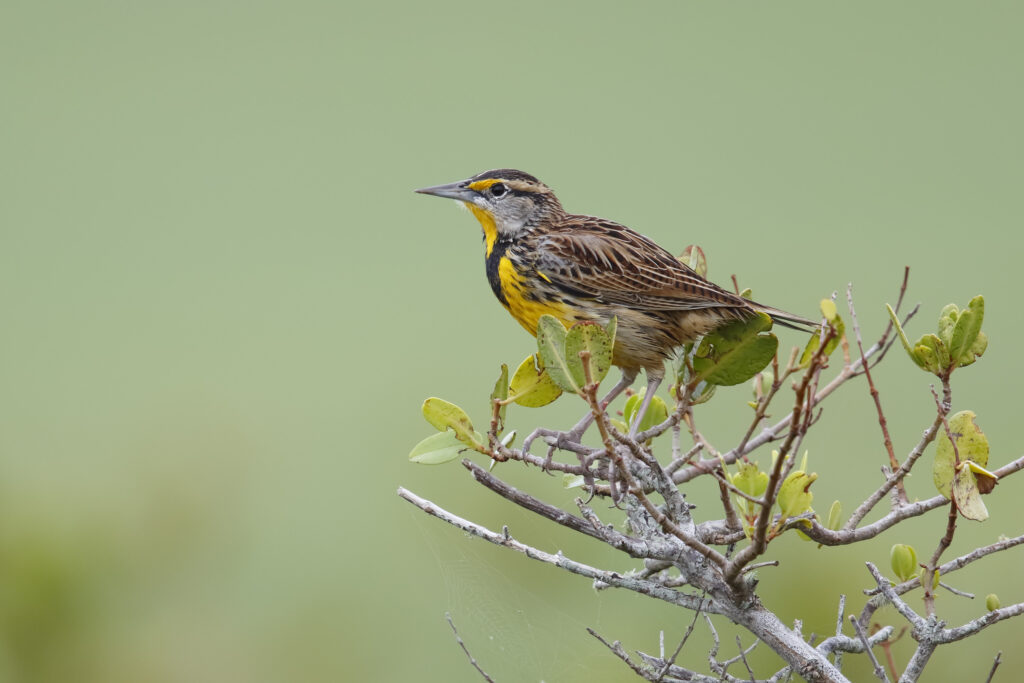
This vibrant bird often forages on the ground. Just like species of American larks, the Eastern Meadowlark seems to have a shorter tail and a pointed beak that is well suited for foraging for grains and invertebrates on the grass.
In the spring and summer, when the males are chanting their territories from perches high above or while soaring low, the eastern meadowlark is perhaps most visible.
The eastern meadowlark is a bird that may either live there year-round or just visit at certain seasons of the year.
It may be observed at any time of the year across Pennsylvania.
In adulthood, an Eastern Meadowlark’s top parts are a pale brown having black patterns, while its bottom parts are a bright yellow with a deep black V on the breast.
Foraging on the ground, where they’re situated, sometimes obscured by foliage, makes Eastern Meadowlarks elusive.
Eastern Meadowlarks may be found in wet fields, grasslands, and agricultural regions, provided that they have a vast enough territory in which to do so.
Males will sing sad, beautiful whistles from high, exposed places like wooden posts throughout the summertime.
9. Canada Warbler

Small and colorful, the Canada Warbler is a breeder across northern regions of Canada and the eastern United States.
Both sexes possess blue-gray backs and brilliant yellow bellies.
The adult male has a black band that runs from his neck to his chest.
Pennsylvania is home to the Canada Warbler, a species of bird that may be spotted nesting in wooded areas from the end of June until the start of August.
It is most common in wet, dense woods that are close to bodies of water.
South America experiences winter.
10. Scarlet Tanager (Female)

Although male Scarlet Tanagers give off a tropical vibe because of their vivid red plumage, the female seems to be another species according to her olive-yellow coloring.
The Scarlet Tanager migrates south during the winter months, spending the summers in Pennsylvania.
Because of its preference for warm weather, this bird does not appear until late spring and departs early in October.
The Scarlet Tanager, a bird native to Canada, may be seen migrating through Pennsylvania in the spring and autumn.
Both sexes use a catchy melody to proclaim their territory and scare away rival birds.
11. Summer Tanager (Female)

North American Summer Tanagers are among the most beautiful birds in the world.
Male Summer Tanagers in the state of Pennsylvania are eye-popping shades of red across their bodies, while females and juveniles are more subdued yellow with occasional orange patches.
As summer tanagers like to graze high in the trees of shrubby and mixed woods, they might be difficult to see.
The Summer Tanager is a migratory bird that may be found across southern Pennsylvania from May to August.
These migratory birds depart Pennsylvania for warmer climes across Central America and Mexico during the autumn.
12. Magnolia Warbler

The adult male of this beautiful bird has dark top parts, brilliant yellow bottom parts, a black breast band, and dark stripes on its sides.
A black mask separates the pale neck from the bluish-gray head.
In contrast to males, females don’t have any black feathering on their bodies.
Magnolia warblers are a mating species that may be observed in Pennsylvania from the middle of May all the way through August.
It prefers the deep undergrowth of coniferous woods, where it may hunt for flies and other insects.
13. Nashville Warbler

A stunning little bird, the Nashville Warbler is a welcome addition to any garden.
Male adults are olive-colored overall, with a blue-gray crown and vivid yellow bellies.
Both the females and the young birds look like the males, except they are significantly less vibrant and pale.
The Nashville Warbler is a mating bird that may be seen in northern Pennsylvania from May through August.
It spends the winter across Central America, like many other warblers.
It thrives in dense, understory vegetation of mixed woods.
14. Yellow-throated Vireo

The Yellow-throated Vireo is an eye-catching songbird with an unusually big head and a robust beak.
Its upper body and face are green-yellow, and its face, eyebrow stripe, neck, and chest are all the same in both sexes.
Both of their wingtips are white, while the rest of their wings are black.
This bird breeds over most of southern Pennsylvania from April through August.
Because of its preference for thick woodlands and its habit of foraging high in the trees, this yellow bird is difficult to see.
Every winter, it makes a long journey toward Central America to spend the season.
15. White-eyed Vireo

A little bird with a grayish brown back and light yellow sides, the White-eyed Vireo has prominent white eyes.
There are two conspicuous white wing bands and a buffy white underside.
The iris of this bird is very pale, making it easy to differentiate from other similar species.
A summertime visitor to southern Pennsylvania, the White-eyed Vireo may be seen there.
Deciduous woodlands are its breeding grounds, and insects and other tiny invertebrates make up the bulk of its diet.
16. Prothonotary Warbler

The little yellow Prothonotary Warbler migrates south from its summer home on the Gulf Coast towards South America and Central America.
Golden in hue, with gray-blue tail and wings, and black eyes characterize the male Prothonotary Warbler.
This bird has a white underbelly, visible when you descend to gaze at it from below.
Females look almost identical to males, except they tend to be a shade lighter in color.
Stream and lakeside woods, as well as forested marshes, are common places to see a Prothonotary Warbler.
Swamp snails and insects make up the bulk of their food.
17. Blue-winged Warbler

Little as it may be, this wood-warbler certainly packs a lot of visual punch.
Male adults are distinguished by their primarily yellow neck and crown and their olive sides and backs.
They have a narrow black band running from the corner of their eye to the tip of their beak, and their blue-gray wings are accented with two tiny white wing bars.
The appearance of adult females is quite like that of males, albeit they are somewhat less brightly colored and have a more muted pattern.
This species of bird prefers to live in open areas or towards the boundaries of forests where there are still young trees.
Between May and August, residents of southern Pennsylvania may see breeding Blue-winged Warblers.
18. Black-throated Green Warbler

Both the Black-throated Green Warbler and Townsend’s Warbler are brightly colored little warblers.
The backs of adult males are olive greenish, while their faces and cheeks are a brilliant yellow, and their throats and chests are black.
The underside is a buffy white, and there are black stripes along each flank.
Females resemble males but lack a black neck.
From May to August, this bird is frequently seen across northern Pennsylvania, where it breeds.
The migratory season provides an opportunity to see it in various regions of the state.
This yellow bird spends its winters throughout the Caribbean and prefers mixed and evergreen woods.
19. Cape May Warbler

Breeding in eastern Canada, the Cape May Warbler might even be seen in the northern regions of Pennsylvania.
The backs of adult males are spotted with olive greenish, while their faces are yellow and their cheeks are a chestnut brown.
There are black stripes across their golden undersides.
Females resemble males but have a more muted color palette and overall grayer appearance.
The Cape May Warbler nests in the forested northern part of Pennsylvania from Mid – May to mid-August.
Yet, during migration, it also appears in the southern regions of the state.
It migrates to the Caribbean during the wintertime.
20. Mourning Warbler
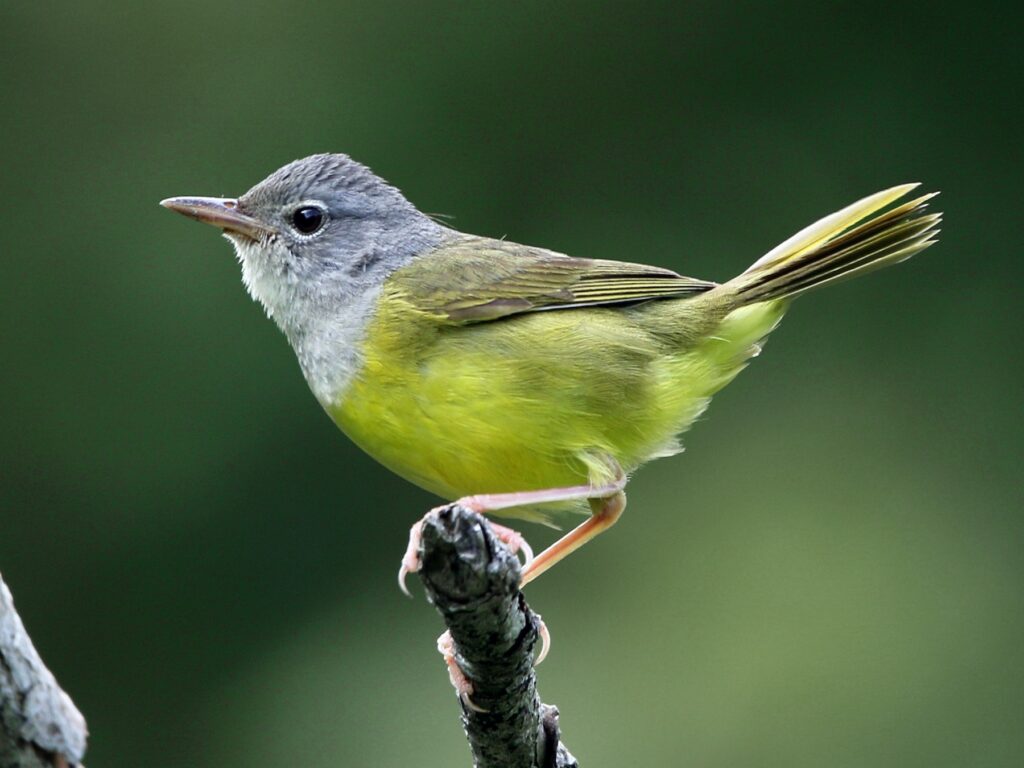
The Mourning Warbler is a brightly colored bird that lives on the ground.
Males reach sexual maturity with an olive-greenish back and a brilliant yellow belly.
The breast is gray with a black spot near the top, while the head and neck are blue-gray.
Similarly, females resemble this kind but are much paler.
From June to August, this warbler breeds in northern Pennsylvania before flying south to Central America for the colder months.
It is difficult to see because of its shy nature and preference for thick vegetation.
21. Hooded Warbler
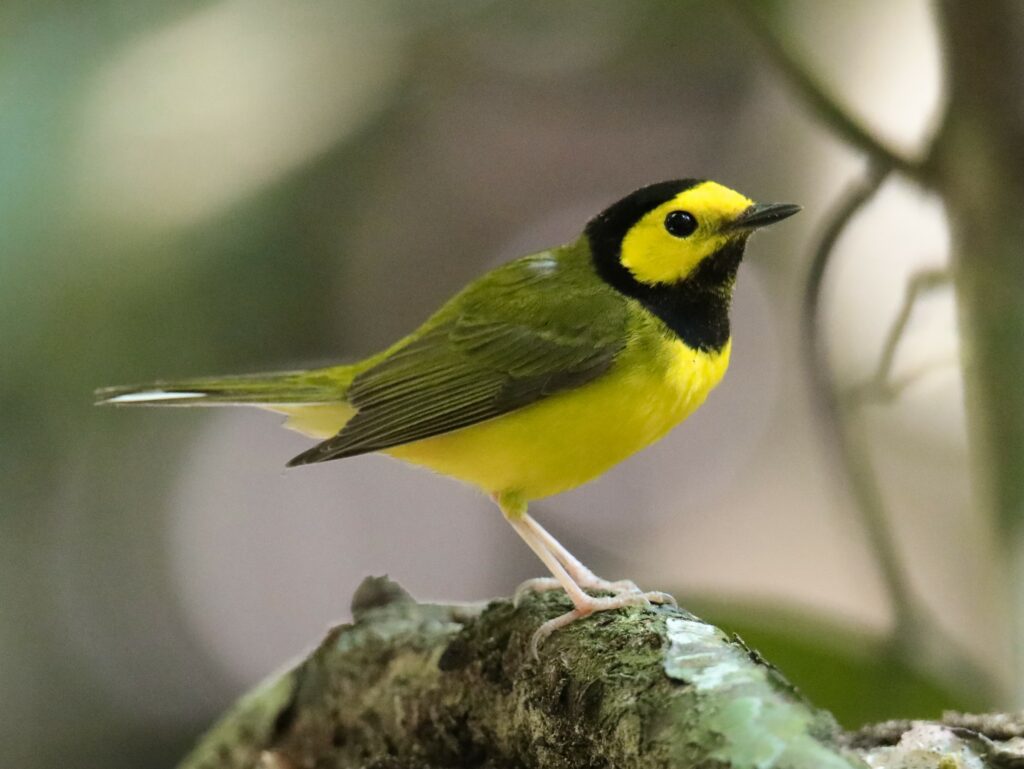
It’s summertime in Pennsylvania when these little yellow birds show up (from May through September).
The Male’s head has a stunning black and yellow color, whereas its back is olive greenish.
Females and juveniles resemble males but lack the black markings on their heads.
These birds seldom stop at feeders but may be seen in backyards throughout the year.
They spend the winter across Central America and Mexico and are most at home in woods with thick vegetation.
22. Kentucky Warbler

The Kentucky Warbler is a cute little songbird that has olive-green feathers on top and citron yellow below.
Adult males and females seem quite similar, except males have more vivid colors, and females possess gray feathers instead of black ones.
Subtly different from adult females, immature females’ head patterns feature dark olives instead of black.
The legs of the Kentucky Warbler have a rosy hue.
During the months from May to August, they nest in southern Pennsylvania before migrating toward Central or South America for the winter.
As a result of their elusive nature and preference for secluded environments, they are notoriously difficult to study.
23. Northern Parula

Among wood warblers, the Northern Parula stands out for its vivid plumage and striking patterning.
Adult males have blue plumage on their upper bodies, a golden yellow spot on their backs, and two white wing bars.
The vivid yellow of its neck and the orange of its chest patch make this bird easily recognizable.
A fantastic way to recognize the Northern Parula is by its partial white eyering.
Breeding populations may be found in northern Pennsylvania’s shrubby and mixed woodlands, where it is a popular summer visitor.
During its annual spring and autumn migrations, it may be seen in every other region of the Keystone State.
24. Great Crested Flycatcher
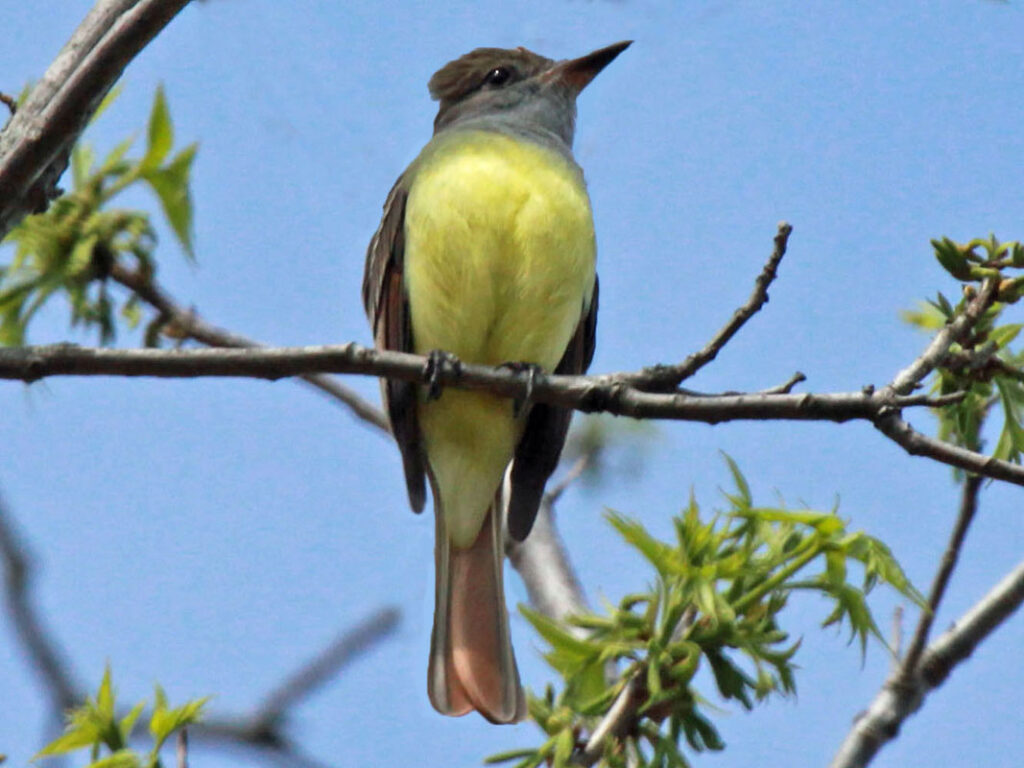
This flycatcher, known as the Great Crested Flycatcher, has a long, lean body.
The adult has a dark brown top and back, with a light yellow belly.
This bird has a crest that is modest and not very noticeable and a tail that is rusty orange.
Throughout the summer months of April to September, the Great Crested Flycatcher is a regular sight across the state of Pennsylvania.
It builds its nests in a broad range of forest types and feeds mostly on insects and fruits.
Central and South America are within their winter range.
25. Baltimore Oriole (Female)

The Baltimore Oriole is a beautiful bird with a powerful voice, yet it is seldom seen.
The adult male is easily recognizable by the striking contrast between his fiery orange underside and his all-black upper body and the single white band on his otherwise black wings.
The females and juveniles are a more rusty yellow than the adults.
When hung from a feeder, orange halves, grape jelly, or nectar will attract Baltimore Orioles.
In a manner reminiscent of that of the Orchard Oriole, fledglings are accompanied by their parents to a close feeder.
This kind of bird is at home in wide-open areas like parks, backyards, and forests, and it often returns to the same spot yearly.
The Baltimore Oriole is easy to see in deciduous woodlands but not so much in deep woods.
They may be found in a wide variety of environments, including orchards, gardens, and open woodlands.
Orioles are often heard rather than seen since they spend most of their time foraging high in trees for food, insects, and flowers.
One of the slowest arriving migratory birds in springtime and one of the first departing in October, the Baltimore Oriole is a summertime visitor to Pennsylvania.
26. Orchard Oriole

This species of Oriole is known as the “Orchard Oriole” because of its fondness for fruit trees and wooded areas.
It travels to Pennsylvania during the summer, where it is concentrated in the state’s southern regions.
Females are mostly yellow, in contrast to the males’ black and dark orange coloring.
Throughout the course of their first two years, young boys darken to resemble adult men.
The Orchard Oriole relies on insects for its early summertime diet, but it shifts to eating ripe wild fruit later in the season.
If you possess a nectar feeder, the parents of a fledgling Oriole will bring it to the feeder to help it get its next meal.
Although Orioles are seldom seen at summertime feeders, this misconception persists that they have left.
Even yet, the birds are still in the area; they’re just preoccupied with bug-catching for the sake of their young.
An example of a bird that arrives late in the springtime and departs early in the autumn is the Orchard Oriole.
Conclusion
In conclusion, Pennsylvania (PA) is home to a remarkable variety of yellow birds.
From the striking American Goldfinch to the lesser-known Prothonotary Warbler, these birds offer a diverse array of colors, patterns, and behaviors that make them a joy to observe and study.
Whether you’re a seasoned birdwatcher or simply enjoy the beauty of nature, the 26 types of yellow birds in PA offer something for everyone.
By taking the time to appreciate these magnificent creatures, we can gain a deeper understanding of the natural world and our place within it.
So, next time you’re out exploring the outdoors, keep an eye out for these vibrant and fascinating yellow birds!
FAQ
When is the best time to see yellow birds in Pennsylvania?
Yellow birds can be seen in Pennsylvania throughout the year, but the best time to see them is during the spring and summer months when they are most active and vocal.
What is the most striking yellow bird in Pennsylvania?
The American Goldfinch is widely regarded as one of the most striking yellow birds in Pennsylvania. The male has a bright yellow body with a black cap and wings, while the female is a duller yellow color.
Are there any endangered species of yellow birds in Pennsylvania?
Yes, there are a few species of yellow birds that are considered endangered or threatened in Pennsylvania, including the Henslow’s Sparrow and the Golden-winged Warbler.
Can I attract yellow birds to my backyard?
Yes, you can attract yellow birds to your backyard by providing food and water sources, as well as nesting boxes and suitable habitat. Some common foods that yellow birds enjoy include black oil sunflower seeds, nyjer seeds, and mealworms.
What is the smallest and largest yellow bird found in Pennsylvania?
The smallest yellow bird found in Pennsylvania is the Yellow Warbler, which is only about 4 inches in length. The largest yellow bird found in Pennsylvania is the Eastern Meadowlark, which can grow up to 11 inches in length.
Where is the best place to go birdwatching for yellow birds in Pennsylvania?
There are many great places to go birdwatching for yellow birds in Pennsylvania, including state parks, nature preserves, and wildlife refuges. Some popular locations include Presque Isle State Park, Middle Creek Wildlife Management Area, and Hawk Mountain Sanctuary.
Last Updated on April 27, 2023 by Lily Aldrin
